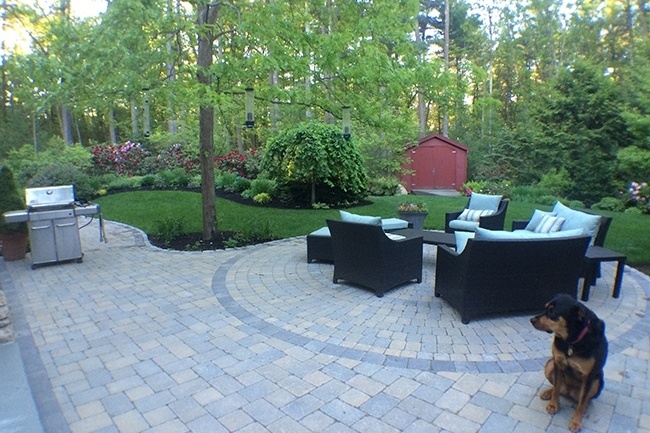Many homeowners are eager to add outdoor space to their property that integrates nicely with their home. Often this is a great way to expand a home and open up additional living space that flows easily from indoors to outdoors. So what’s the best way to integrate indoor and outdoor spaces so they work well together and are both attractive and functional? Start by thinking inside out. This will provide clues about how to integrate the two.
Here are three tips for successfully integrating indoor and outdoor spaces:
1) Start inside and look out What does that mean? It means carefully considering the outside spaces you will see and access from various places within your home. What are your windows and doors looking out on and how will you access that space?
Most kitchens have windows over the sink and look out over the back or side yard. This is probably the one window you spend a lot of time standing in front of and looking out. What do you see? What would you like to see? That view will help you focus the framing of your outdoor living space.
Likewise the door you will be using to access your outdoor space deserves consideration. If it has glass in it, what can you see? The view will differ greatly between sliders and doors that have divided lights or just sidelights. Is it comfortable to get from the inside to the outside? Consider the door function, the outside landing, and steps. Each is a part of the experience of getting into your yard.
2) Check the SECOND floor view That’s right – the windows upstairs also look out over your yard and provide a view of the landscape and constructed spaces. In fact, bedroom windows – and even bathroom windows – are often areas of contemplation as occupants stand there and look out as they’re getting dressed and grooming. Shouldn’t the views be pleasant and relaxing? Considering the view from upstairs also provides the opportunity to check how trees interact with the landscape. You might not give deciduous, leafy trees much thought on the first floor because their relatively narrow trunks may not block much of the view, but their broad, leafy canopies might completely block certain views from the second floor.
3) Break the landscaping “circle” A classic landscaping mistake made by homeowners and builders alike is to landscape closely around the house foundation, encircling the home with shrubs and other plants. Unfortunately, this is very limiting – the view from inside is usually three to four feet off the ground, so when you look out a ground floor window, often you’re looking right over and beyond the landscape. Instead, think about planting outside the “circle”. Move gardens, trees, shrubs and other features away from the house into areas of the yard you can see more easily from inside. Consider adding accent lighting on ornamental tree and garden features like walls or walkways to add depth to the view and draw the eye outward in the evening hours. Properly designed low voltage lighting has the ability to make your home seem bigger because it expands the views and visually integrates the interior and exterior.
There you have it. Three easy ways to integrate indoor and outdoor space and create an attractive, functional Life-ScapeTM that enables you to enhance your lifestyle and take full advantage of your property.





Leave a comment